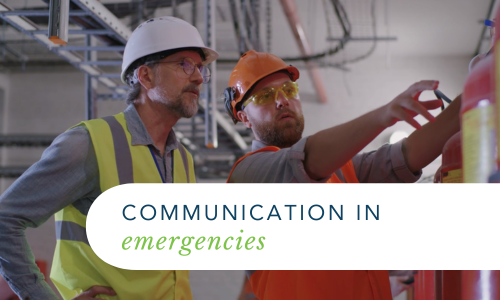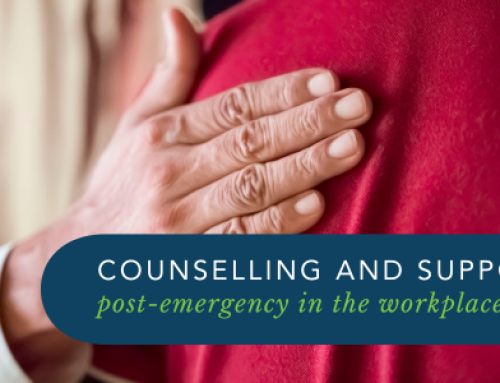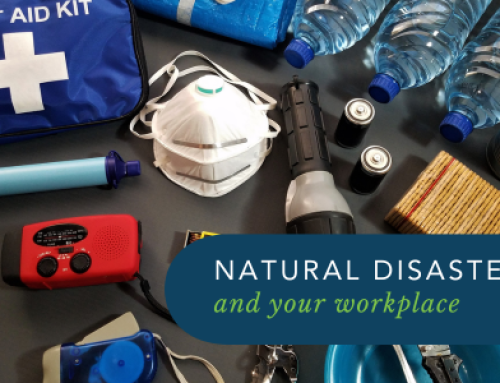Communication in Emergencies
Effective communication can be the difference between life and death during times of crisis. When it comes to natural disasters, medical emergencies, fires, or any other urgent situation, the ability to communicate clearly, efficiently, and compassionately is essential. Below we explore the crucial role of communication in emergencies and hope to provide valuable insights on how to enhance this vital skill.
Why Communication in Emergencies is so Important
Timely and accurate dissemination of information can prevent panic, guide individuals to safety, and provide instructions on how to proceed in an emergency. For the public’s safety, emergency wardens and first responders must communicate effectively.
The coordination of emergency response and rescue efforts relies heavily on effective communication. It is imperative that emergency wardens, first responders, and medical personnel work seamlessly to save lives and provide assistance to the victims of emergencies. Communication can include:
- Situational Awareness: Having clear communication facilitates individuals’ understanding of evolving situations so that they can make informed decisions. Whether it’s evacuating an area, seeking shelter, or administering first aid, knowing what is happening and what to expect is crucial.
- Emotional Support: In times of crisis, people may require emotional support and reassurance. Compassionate and empathetic communication can provide comfort and alleviate anxiety among affected individuals.
Tips for Effective Communication in Emergencies
Stay Calm
It’s natural to feel overwhelmed in an emergency, regardless of our level of experience or skill, but maintaining composure is essential. Clear thinking leads to better communication. Take a deep breath, gather your thoughts, and speak calmly and confidently. Be sure to never yell or scream as this can exacerbate people’s fear and panic. You may need to speak loudly but do so with assertiveness rather than aggressiveness.
Simple Language
Avoid technical jargons and complex terms that may confuse people. Use simple, concise language that is easy to understand. This is particularly important when providing instructions or relaying critical information. Using easy to understand language will also avoid misunderstandings, prevent further confusion and ultimately save time.
Repeat Important Information
People may not hear or comprehend everything the first time, especially in chaotic situations. You may be at the end of your instructions before they even realise you are saying something that they need to hear. Repeat crucial information multiple times and use different communication channels if possible.
Empathise
Show empathy and compassion when interacting with those affected by an emergency. Acknowledge their feelings and offer reassurance and support. Your emotional support can make a significant difference to their experiences. This will often happen once those affected people have been safely removed from the immediate danger.
Use Multiple Communication Channels
Depending on the situation, a variety of communication tools such as megaphones, PA systems, UHF (two-way) radios, social media apps (WhatsApp groups for example), and emergency alert systems can be used. Using multiple communication channels increases the likelihood of reaching a wider audience and ensuring the message is received by all.
Plan and Practice
Emergency Control Organisations should have communication plans in place and regularly conduct drills and exercises. This ensures that everyone knows their roles and responsibilities during a crisis, can test those methods of communication and what is said to ensure they can communicate effectively under pressure.
Effective communication in emergencies is not just a skill; it is a critical lifeline that saves lives and minimises the impact of emergency. Whether you are a first responder, emergency warden, or individual caught in an emergency, knowing how to communicate clearly and concisely is essential.
By staying calm, using simple language, taking control being assertive and showing empathy, we can navigate crises more effectively, support one another, and ultimately emerge stronger even from the most challenging situations.
Do you have emergency management procedures in place at your workplace? Workplace Emergency Management offers complete emergency management services, including emergency training, emergency planning, evacuation diagrams and other nationally recognised training.
GET IN TOUCH
Are you ready for peace of mind that your workforce is as safe and prepared as possible?
With a dedicated team of staff ready to help you meet compliance requirements and improve the overall safety of your workplace, all you need to do is get in touch.
Request your free audit today!



